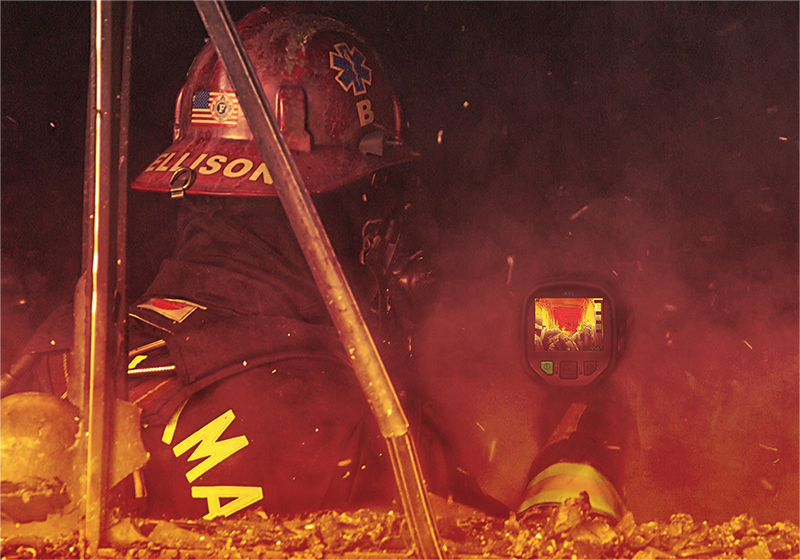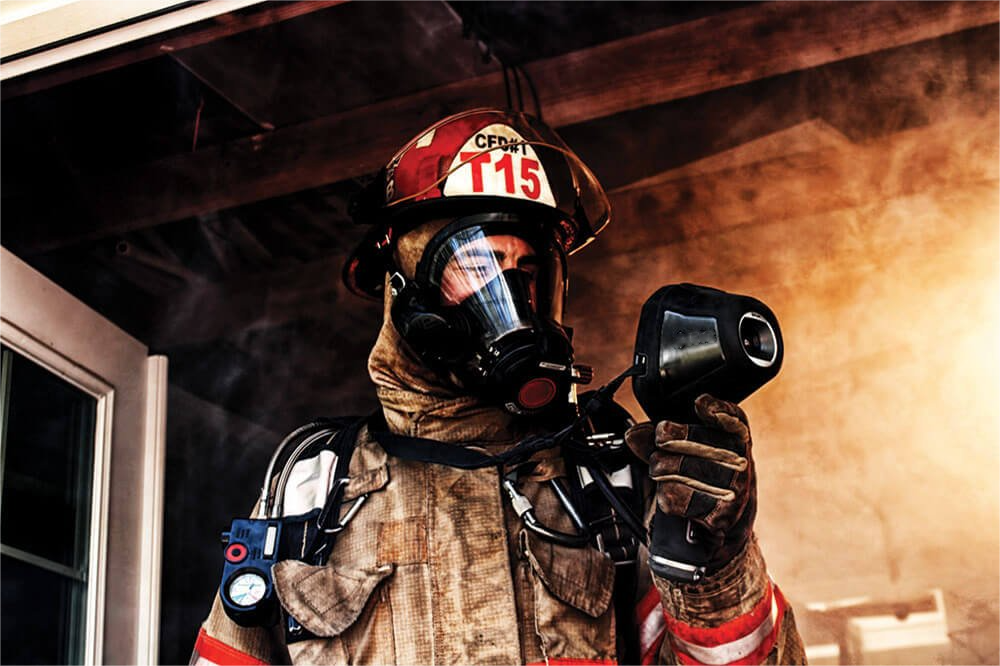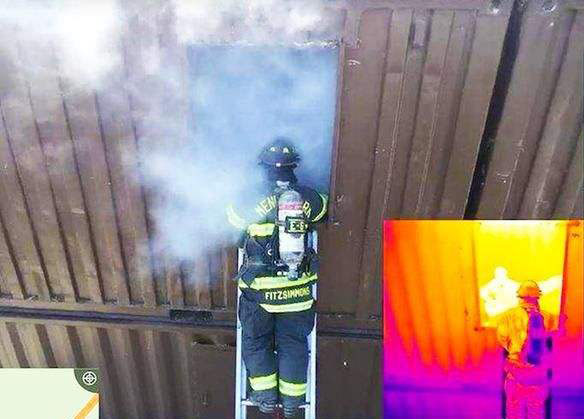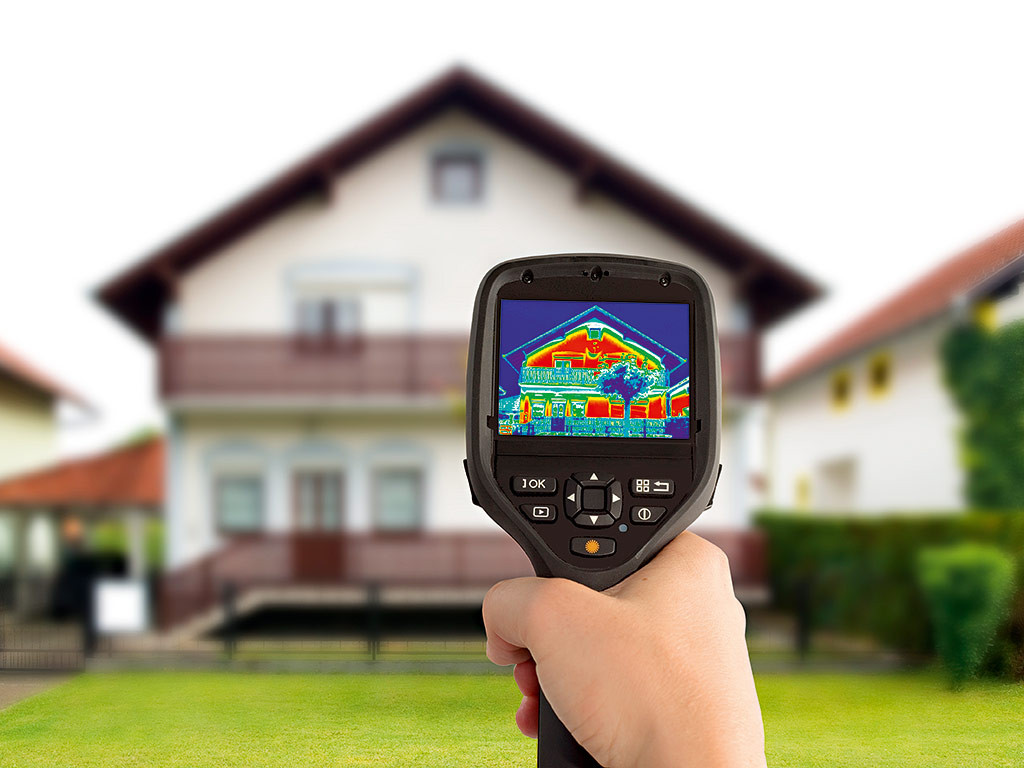Fire detection application
Once a fire occurs, it is impossible to detect the development of the fire at the scene, often causing devastating disasters.The emergence of infrared thermal imagers can detect the temperature of the fire scene in a non-contact manner,which is convenient for firefighters to fight fires and rescue fires reason.
1. Fire detection:
Fire reconnaissance is all the information obtained by the fire brigade about the firefighting targets, it is the basis for the commander to deploy tasks and start the battle,and it is one of the most important tasks in the entire fire scene.But in our actual combat process, fire reconnaissance is often just a simple question and look,and the situation of seeing a fire and a headless fly occasionally occurs, and even relying on simple naked eyes, resulting in greater losses.
Infrared thermal imaging cameras can be used as an auxiliary tool in fire detection to determine the location of the flame center, degree of combustion and spread.On-site commanders can observe the fire scene through thermal imaging cameras. According to the information obtained,The fire commander can correctly arrange the forces to effectively extinguish the fire.


2. Auxiliary fire extinguishing :
Thermal imaging cameras can be used to assist firefighters in extinguishing fires, and use thermal imaging cameras to judge the root of the flame, instead of conventional fire fighting. This can effectively improve the fire fighting ability, and extinguish the fire better and faster. However, when using the thermal imager, it is not possible to draw water at the same time, because the cooler water flow will obviously interfere with the thermal imager's judgment of the flame temperature, thus losing the use effect.
3. Building structure safety inspection:
The thermal imager can also conduct non-destructive inspection on the safety of the building structure, and continuously inspect the load-bearing parts of the building while fighting the fire, and judge whether the strength of the building has declined.
Especially in the combustion of large-span steel structure factory buildings, because the steel structure begins to reduce its strength at 300 degrees, so the thermal imager can be used to judge whether the steel structure is safe, and those parts need special cooling to ensure the safety of the factory building and personnel. Safety.
Thermal imaging cameras allow you to see through smoke, find victims quickly, pinpoint hot spots, and more, making them an indispensable tool in firefighting missions.
4. Determine the location of the leak:
Both liquid vaporization and gas pressure changes will absorb surrounding heat. It is difficult for firefighters wearing heavy chemical protective suits to observe the condensed water vapor in the air or hear hissing sounds with the naked eye. Abnormal changes in heat can be observed with a thermal imager , so the location of the leak can be observed to provide a basis for further processing. In addition, at the scene of an accident where there is no light or the light is blocked, firefighters cannot judge the specific location of the leak only by the sound of the leak. There is a temperature difference between the leaking gas or liquid and the surrounding environment on site, so the infrared thermal imaging camera can be used to quickly find the specific location of hidden leaks caused by valve damage, pipeline rupture or other related equipment damage.
5. Determine the fire point:
The judgment of the fire point in the fire scene is very important. In indoor fires, there are often two hottest points. The first is the wall closest to the fire site. Indoor fires mostly start on the ground. According to the effect of the flame heat radiation on the wall closest to the fire site, a high temperature area will be formed at the bottom of the wall, and it is difficult for other walls to form such a high temperature field.
The second is the ceiling corresponding vertically to the fire point. When a fire breaks out indoors, if the ceiling does not burn down, the hot smoke flow will spread vertically upwards under the action of convection. After being blocked by the ceiling, it will form a ceiling jet at the ceiling and spread to the surroundings. Therefore, the highest temperature area is usually formed at the ceiling corresponding to the vertical direction of the fire.


6. Search and rescue trapped persons:
Taking advantage of the fact that infrared light can penetrate hot smoke and the temperature difference between the trapped people at the fire scene and the surrounding environment, using infrared thermal imagers to display different temperature distribution maps can enable firefighters to clearly find out in the case of dense smoke Trapped people, gain precious time for rescue. Research data shows that at an indoor fire scene under the same hot smoke conditions, the search and rescue time using thermal imaging cameras can be reduced by 80% compared with the search and rescue time without using thermal imaging cameras. The rescue efficiency is greatly improved, and at the same time, search and rescue omissions can be avoided, and the success rate of search and rescue can be improved.
Infrared camera usage matters
Infrared thermal imaging cameras have irreplaceable advantages in firefighting work. However, the application methods of infrared thermal imaging cameras in this field are still relatively lacking, and have broader application prospects. In the future, with the popularization of thermal imaging cameras and the recognition of thermal imaging cameras by firefighters, it is believed that its application value in firefighting work will continue to be reflected, which can greatly promote the development of firefighting.

1. Consider the cooling effect of water during the fire fighting process. Especially in the indoor fire scene, the water hits the wall during the fire fighting process, which has a great influence on the temperature of the wall, which may interfere with the judgment of the cause of the fire. Try to stop spraying water into the photo area when taking thermal images
2. Pay attention to the shooting method and angle. When shooting on-site thermal images, it is not advisable to align the central temperature measurement point of the infrared imager with the highest temperature point on the fire scene, because the thermal imager will adjust the image according to the highest temperature point, so the photos taken in this way have fewer layers, especially The image details in the low temperature area are less. Instead, it should be slightly deviated, as long as the objects and traces to be photographed are included in the image, and the point with a higher temperature is taken as the central temperature measurement point, so that the captured image will be clearer and the temperature field will be more distinct.





